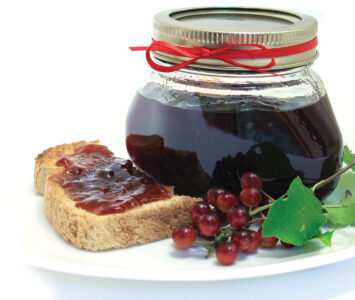Learn how to keep cool without AC, which will help you save money on energy bills even through scorching summer weather.
Around 50 years ago, about nine out of 10 U.S. residents spent summertime in homes without air conditioning. Suggest turning off the AC in summer these days, however, and you’ll frequently encounter wide-eyed disbelief. Our society has come to regard refrigerant-based air conditioning as an indispensable technology and has forgotten about plenty of other cheaper, simpler ways to beat the heat.
Come Out of the Cold
The central problem with our dependence on air conditioning is its voracious energy appetite. At current usage rates, air conditioning U.S. homes, businesses, schools and vehicles releases fossil carbon and fluorocarbon refrigerants that have a total annual global-warming impact equivalent to a half-billion tons of carbon dioxide. Eliminating these emissions from air conditioning would benefit the atmosphere as much as shutting down 140 typical coal-fired power plants would.
Air conditioning also eats a sizable chunk of our budgets. In the United States, I estimate that our collective annual electric bill for cooling our homes is about $30 billion. The yearly cost per household ranges from about $200 in the Northeast to more than $450 in the sweltering South.
So, how do we wean ourselves off of this energy-intensive habit? The range of natural ways to cool your home depends on where you live: in the North or South, on a forested hillside or in an urban heat island, in an apartment or a house. But whatever your situation, you can find natural cooling methods to stay comfortable without air conditioning — starting by adjusting your internal dial.
Your Inner Thermostat
Fifteen years ago, thermal comfort researchers Richard de Dear and Gail Brager — citing research that had examined thousands of human subjects in studies from around the world — developed the “adaptive model of comfort.” This principle shows that our bodies’ preferred indoor temperature isn’t fixed. Rather, our tolerance for hot air shifts depending on the temperatures we’ve recently experienced. Superfluous reliance on air conditioning thus hampers our ability to acclimate to higher temperatures. The more you expose yourself to higher temperatures, the more you’ll feel comfortable without switching on the AC.

In hot weather, we need help shedding the heat our bodies generate. Air conditioning does that, but only a small portion of the energy it consumes helps cool your body. A lot more of its energy goes into chilling concrete, brick, wood, metal and empty space. Many of the following alternative cooling practices are aimed more specifically at cooling people.
Tap Into Water’s Refreshing Effects
Water will cool you off even faster than air. Direct contact with cold water not only provides instant relief through evaporative cooling, but also has lingering effects that can help get you through the last couple of hours before sunset. Wear a dampened kerchief around your neck. Take cold showers and drink plenty of water. If your garden needs a drink, set the sprinkler to overshoot a little and send the kids (or yourself) out to cool off.

Mechanical evaporative coolers — units that transfer heat from air to water to create a cool breeze — are highly effective in regions with hot, dry summers. (Learn about a new kind of “swamp cooler” by reading Try a New, Improved Swamp Cooler.) You can also achieve this type of cooling via lower-tech methods, such as hanging a wet sheet over an open window or door to catch the breeze coming through, or situating a fan to blow air across salted ice or frozen water bottles.
Natural Ways to Cool Your Home
A warm home with plenty of airflow from fans and open windows can be more pleasant than one that’s sealed up and air-conditioned. During the hottest stretch of the day, wear light clothing, keep your south and west windows closed and shaded, and turn on ceiling fans. After sunset, open windows all around your home. Use fans to flush warm air out and pull cooler nighttime air in. An attic fan or whole-house fan running at night is most effective, but you can also help cool a room by installing box fans in two separate windows, with one fan pulling air in and one pushing it out. Hot air that rises to the top of the house can exit via attic vents, which don’t require electricity to function.
A screen door will increase airflow from outside, and on a balmy afternoon or evening, a screened-in porch (or the shade of a tree, if mosquitoes aren’t bad) can still be quite comfortable, especially if there’s a breeze or you have a fan going. If you have a basement, take advantage of its free geothermal-cooled environment.

Vegetation has a cooling effect, as well. If possible, plant deciduous trees on the south and west sides of your house to block sunlight in summer and let it through in winter. If your trees aren’t yet big enough to cast much shade, put other types of tall plants, such as giant reeds or sunflowers, along the sunbaked sides of the house. Climbing plants, such as grapevines, can also provide a cool green screen over windows in summer but allow sunlight and heat through in winter. A “green roof,” one covered in grass or other vegetation, cools effectively but can be costly. In a warm climate, white roofs can help cool by deflecting sunlight.
The less heat you generate inside your home, the easier it will be to cool off. All energy-consuming appliances and devices produce heat, so don’t run anything that’s unnecessary. Switch to CFLs or LEDs instead of using incandescent light bulbs, which actually expend 90 percent of their energy on producing heat. Keep your oven off and avoid boiling anything on your stovetop, which releases humidity in addition to heat. Eat less hot, heavy food, which warms you up internally. Hang wet laundry on a clothesline rather than turning on your dryer.
By making some of these natural cooling changes in your home and routine, while throwing in a few ideas of your own, you can let the fresh air in and still be comfortable all summer long.
Readers’ Tips on Keeping Cool Through Sultry Summers
We turned to our Facebook community for recommendations on handling summer heat sans AC. Here are some of their coolest natural cooling tips. — MOTHER EARTH NEWS
Drink lots of water. One summer, my family made an effort to properly hydrate for a week, and it took much more heat and humidity to bother us. — Shawn McPheron
I bought a cheap plastic dish tub that I use to soak my feet in cold water from our well. Amazingly, a good foot soak can cool you off for hours! I also plan my meals ahead of time and cook just one day per week. If you do this, plan to just quickly reheat the meals, or eat cold meals with more fruits and vegetables so your kitchen stays cooler. Think pasta salads, fruits, hummus — even granola and yogurt are great! Most of us don’t want big, heavy meals on hot days anyway. — Rebecca Lewis Bell
Freeze salt water in a plastic bottle overnight, and then place the bottle in front of a fan. The salt water will take longer to melt than water without salt. — Robert Hocker
I covered my window with a plastic roofing panel that I cut to fit tightly in the window’s wooden frame. This was a cheap fix and the most effective method I’ve found to block both heat and cold while still allowing full sun into the room. Plus, I don’t have to wash heavy curtains! I have now covered six large windows and the results are measurable. — VJ Walker
This project will take a bit of MacGyvering, but, if you’re so inclined, it’s not hard to build and will work wonders on hot days. I got a large plastic tote box and cut a few big holes into the lid. I filled the tote with ice and put a battery-powered fan above one of the holes, facing inward. The cold air vents out of the other holes to cool the room. — Putsch Lou
Each summer, I cover all the west windows in my home with car shades, which are typically used for windshields. You can find them at dollar stores. I cut my power bill in summer by 40 percent the first year I did this, and ran my AC almost 50 percent less. It was hot in my home before this fix, and now it’s so wonderfully comfortable — and I live in the Deep South! — Susan Dyer

Stan Cox is the research coordinator at The Land Institute in Salina, Kan. He is the author of Losing Our Cool: Uncomfortable Truths About Our Air-Conditioned World.







